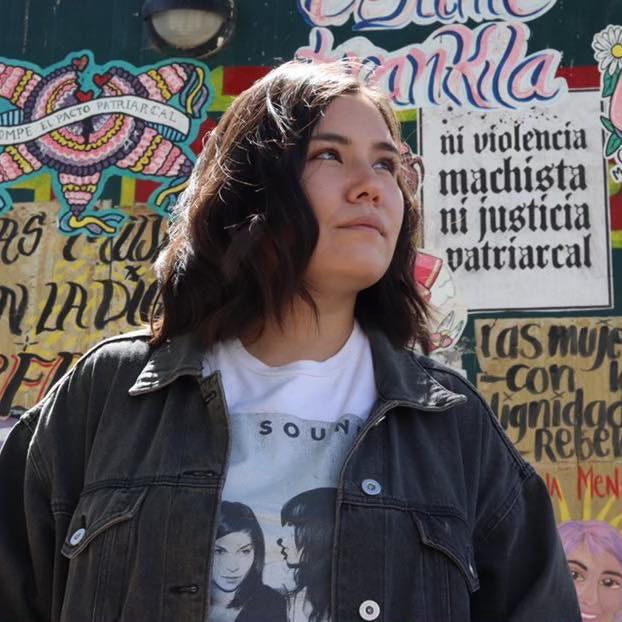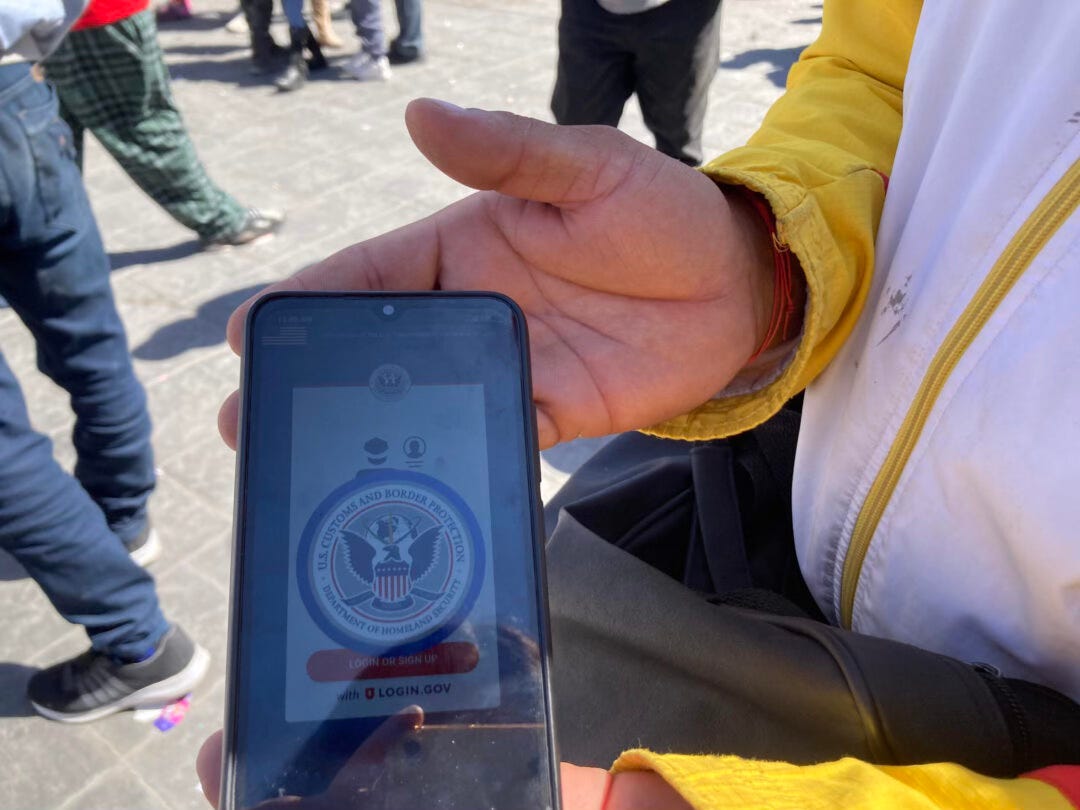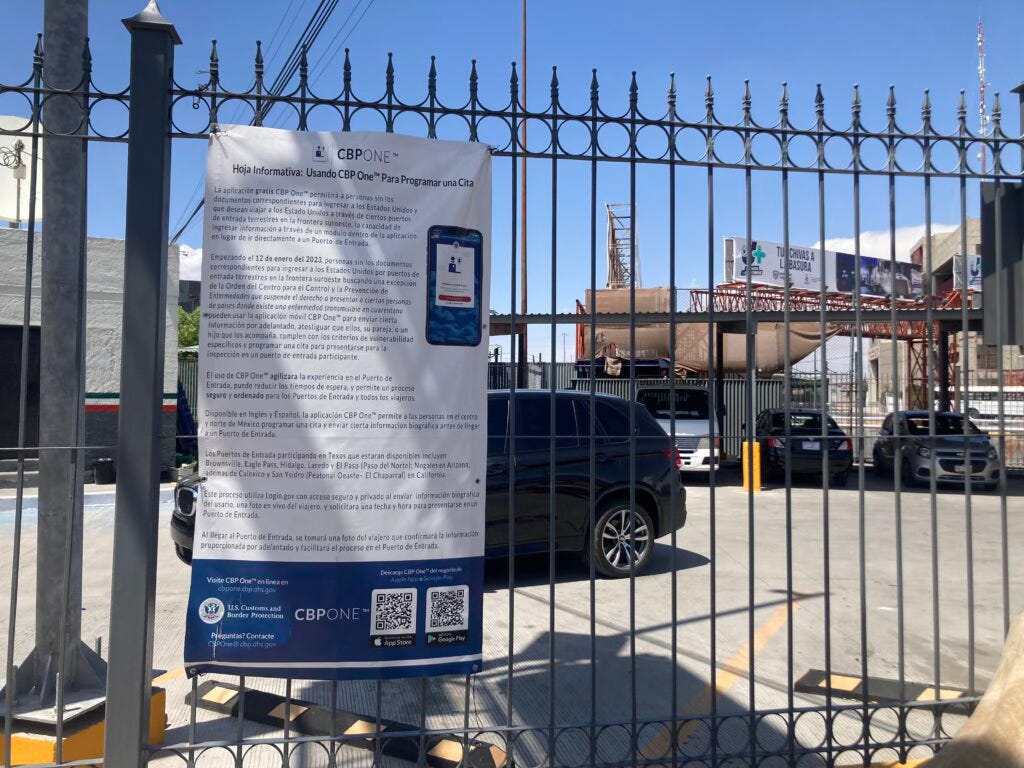The CBP One app—according to journalist Verónica Martínez—has been deterring asylum seekers now for more than a year. In 2023 Customs and Border Protection required that all asylum seekers use the app to begin their claims, and this has been a focus of Martínez’s journalism as part of her work with La Verdad Juárez and her fellowship with the international organization Migration Tech Monitor. While CBP claims that the app works efficiently and cuts down on smugglers, Martínez’s journalism (that she links to specifically below) shows that this is hardly the case. Indeed, as she explains here, the app has become a both a digital and bureaucratic border wall. Rather than an innocuous phone app, Martínez shows it needs to be viewed as part of the broader U.S. border enforcement apparatus and its externalization into Mexico and beyond.
In 2023, Martínez was one of Migration Tech Monitor’s five fellows from all over the world (Mexico, Venezuela, Syria, Uganda, and Saudi Arabia/UAE) to report on technology, surveillance, and migration. For several years, Martínez has worked for La Verdad Juárez, an independent outlet that does hard-hitting investigative journalism based in Ciudad Juárez. She previously reported for the El Paso Times and the Las Cruces Sun-News.

For the last year you have been focusing on the CBP One app. What are your most important findings?
But CBP One has been around for years, and it was mainly used to process ahead of time I-94 and commercial permits to import agricultural products. So it’s been a kind of tool used by the U.S. Department of Homeland Security to manage entries into the United States.
Now that asylum seekers are required to go through this app, the U.S. government has promoted it as a tool that helps manage migration in a “safe and orderly manner.”
It was in December 2022 that they started to promote the use of the app for parole programs mainly offered to Venezuelans, and then this moved to other nationalities and any other person who wanted to request asylum. This is when we started to see the effect that the use of this technology has on people on the move and border communities.
For me there were three main findings to my investigations.
First, the implementation of this app always had the purpose of diminishing the amount of people who were physically coming to the U.S.-Mexico border, but encounters with Border Patrol show that irregular entries have not ceased. From May to December of 2023, around 324,000 CBP One appointments were processed through the ports of entry, but there were more than 1 million encounters with Border Patrol registered in that same period.
Second, the app was not developed to be accessible. The work done by international and local organizations show a great need for orientation and programs that help people navigate the app.
And third, moving the asylum process to a digital platform has shifted the needs of asylum seekers who make it all the way to the border. Now access to internet and power sources are essential for people on the move, and sometimes that is put before other needs like health and shelter.

Did you have any stories about people’s struggles using the CBP One app that are emblematic of what people are going through?
Third, the app is not meeting the demand of asylum requests, and the issues that users often encounter make CBP One a barrier to access asylum rather than an efficient tool.
How does this play into the intense militarization that we see on the Ciudad Juárez–El Paso border?
Can we view the CBP One app as another mechanism of U.S. border externalization? And, if so, how have you seen that play out in Mexico?

What do you think will happen this year, especially given the presidential campaigns and elections in both countries? In the United States we are definitely seeing more exaggerated narratives around migration, for example. It seems like dynamics such as increased border militarization and externalization will only persist.
From what we saw on the first electoral debate, the candidates for president, Claudia Sheinbaum and Xóchitl Gálvez, have stated a similar stance, and this is collaborating with the United States to handle migration influx. At the federal level, I think this is what we will continue to see: the INM enforcing strategies to mitigate migration and reduce irregular crossing at the U.S.-Mexico border.
In terms of immigration policies, I think we will see more interesting takes from state governments, like the current approach of Governor María Eugenia Campos in Chihuahua, focusing on public safety when talking about immigration in the region.
You were a part of a group journalists who received a fellowship in 2023 from the Migration Tech Monitor. Could you tell me a little bit about this and the other journalists in the fellowship? I bet there were some interesting projects!
Wael’s work reminds me of the work I used to do in the U.S. when talking about the challenges that asylum seekers face at the destination countries. In Mexico, I’m doing very different work because Mexico is a country of transit, and people on the move face different challenges. Then we have amazing projects like Voices of Venezuela by Nery Santaella, whose work is more related to nonprofits and the work that Rajendra Paudel does relating to education through social media.
There is also Simon Drotti, who is the only one who directly works in tech as a data analyst and graphics and UX designer. I think his project is amazing, a social media platform for refugees and asylum seekers to share their stories.



